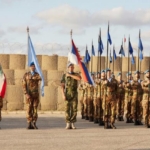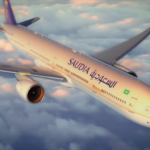On November 29, the Conflict Armament Research (CAR), British-based research centre primarily funded by the European Union, released a report showing evidence of Iran’s involvement in the smuggling of weapons to the Houthis rebels in Yemen. The analysis is based on the seizure in February and March of weapons from dhows sailing in the Arabian Sea by the Australian warship HMAS Darwin and the French frigate FS Provence, both part of the Joint International Task Force operating in the Horn of Africa in counter-terrorism and counter-piracy activities. This Task Force works independently and separately from the Saudi-led military coalition operating in the same area.
According to the report, HMAS Darwin seized more than 2,000 weapons, including AK-type assault rifles and 100 Iran-made rocket launchers from the dhow directed to Somalia. The seizure by the French frigate includes other 2,000 assault rifles, with those typical features of the Iranian production and 64 Iran-manufactured Hoshdar-M sniper rifles. In addition, nine Russian-made Kornet anti-tank guided missiles were found on board. An additional Kornet seized by forces within the Saudi coalition in Yemen seems to be part of the same production run as those seized by FS Provence.
The report mentions also the seizure by USS Sirocco – US Navy patrol boat- of AK assault rifles, rocket launchers and machine guns from a dhow transiting in the region. The US Navy believed these weapons to come from Iran and be destined to Yemen. To date, however, no additional information has been shared by the US with CAR.
Weapons seized on board seem to match with those seized from the Houthi rebels in Yemen. Crossing serial numbers and weapons model, CAR has drawn three main conclusions about their origin.
First, the Iranian-produced RPG missile launchers -easily identifiable by the olive green color furniture, the cylindrical rear firing grip, and the yellow serial number – were found on several vessels, including those intercepted by HMAS Darwin and Sirocco. Secondly, sniper rifles could come from Iranian stocks. In fact, such a significant number of weapons sequentially numbered suggests the weapons come from a national stockpile rather than from multiple non-state sources. Finally, Iran may have provided anti-tank guided missiles both of own and Russian production.
Given the number of weapons found on board, most of them manufactured in Iran, investigators talk about the existence of a weapons pipeline from Iran to Yemen. Weapons would initially reach Somalia (in the northern region of Puntland) for local weapons markets and then continue the journey towards Yemen, to arming the Houthi rebels, who have been fighting for the past 20 months against the internationally recognized government of President Hadi.
According to CAR, Iran’s involvement in this kind of traffic is a serious violation of the embargo placed by the United Nations on the arms transfer to rebels. In particular, UN Security Council Resolutions No. 2140 (February 2014), No. 2216 (April 2015), and No. 2266 (February 2016), calling on member states to take all necessary measures to prevent this type of transfers. It would not be the first episode of violation of UN Resolutions by the Islamic Republic.
On 23 January 2013, in fact, the USS Farragut intercepts a shipment of 122-mm Katyusha missiles, radar systems, Chinese QW-1M anti-aircraft missiles, and 2.6 tons of RDX explosives on the ship Jihan 1, off the Yemeni coast. The episode violated the stricter UNSCR 1747 (2007), according to which “Iran Shall not supply, sell, or transfer directly or Indirectly from its territory or by its nationals or using its flag vessels or aircraft any arms or related materiel”.
As in the past, Iran has denied its involvement in these activities, highlighting that its support for the Houthi rebels is only political and diplomatic. However, sources from different Somali ports confirm that the weapons arrive from Iran on large vessels that either come into dock or anchor off the coast, where they are reached by smaller boats, then carrying part of the illicit cargo to other ports in the region. The rest goes to Yemen, in particular to the port of Ash Shihr, east of Mukalla, where they camouflage in the intense maritime traffic that characterizes this area. Further evidence is the very nature of those weapons, uncommon in the Somali arms market.
In conclusion, Iran’s military support for the Houthi rebels is quite evident, despite several warnings received both at the UN and in other regional forums. Patrolling in the waters of the Horn of Africa will continue in order to prevent the supply of arms to the rebels, further fueling the already critical situation in Yemen. However, it would be advisable a future closer coordination and enhanced information sharing among the various actors operating in the field, so they could have a comprehensive picture of Iran’s traffic and be able to tackle more effectively the threat they represent for the stability of the region.
Paola Fratantoni







